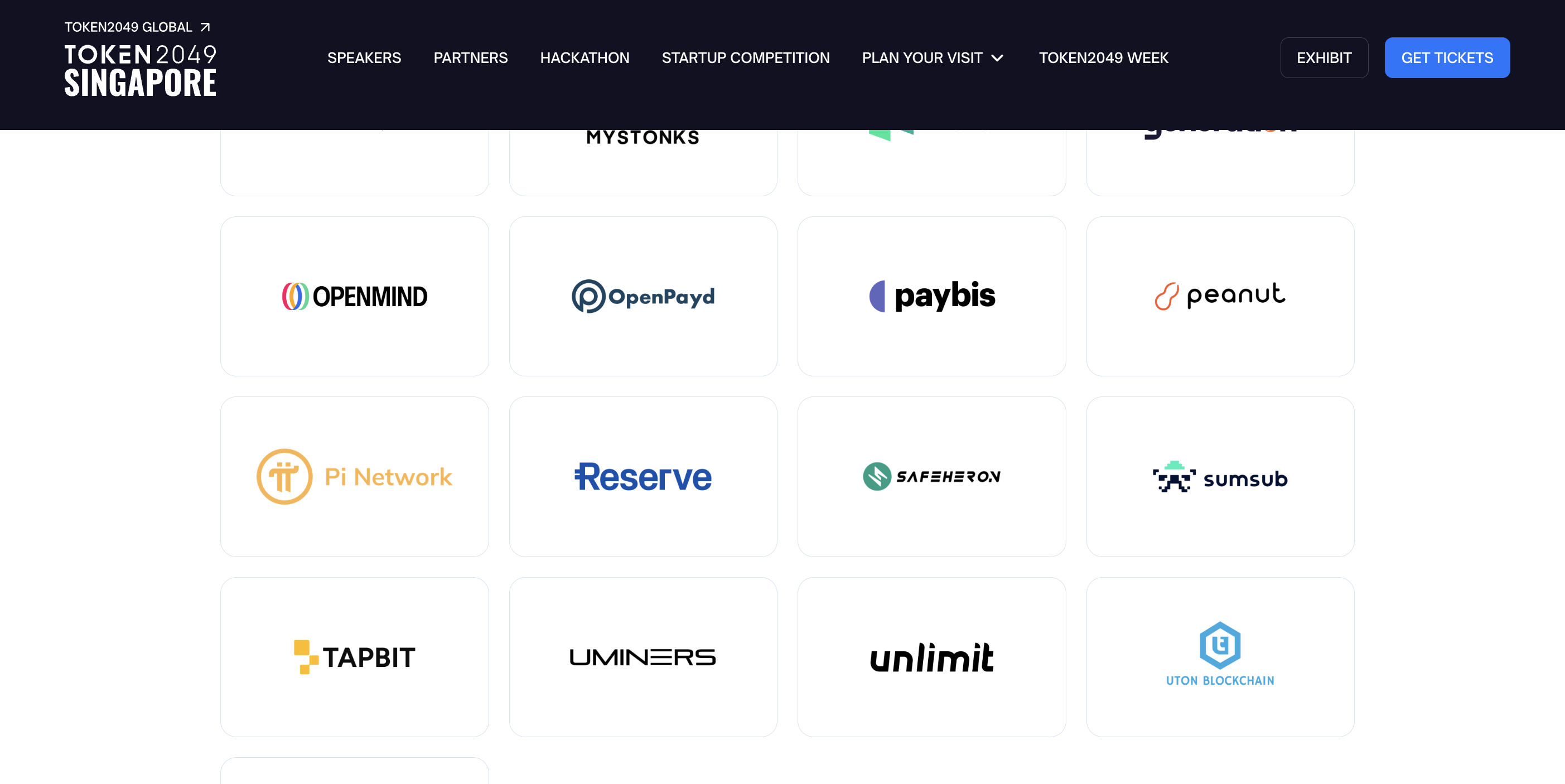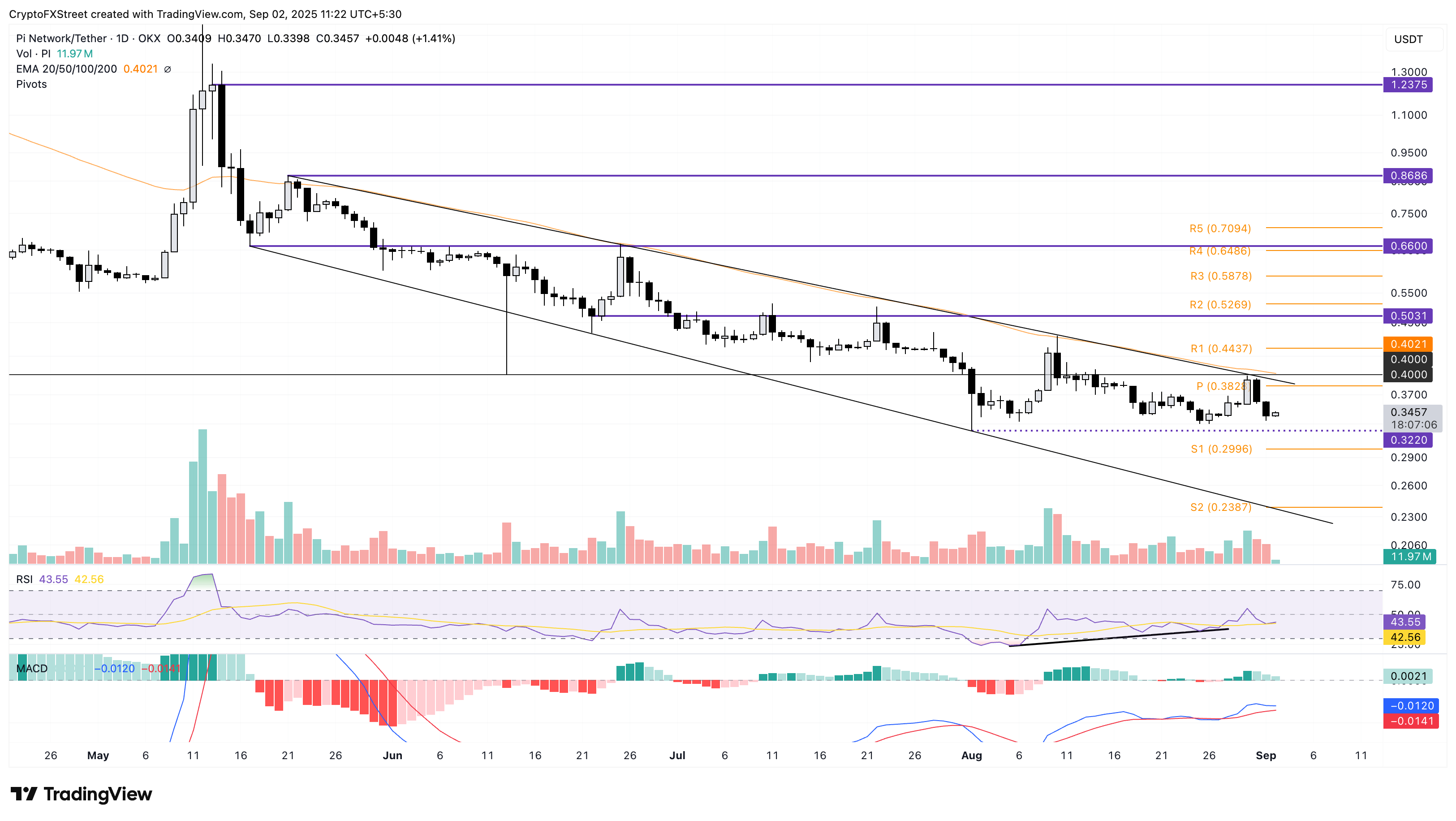Pi Network Price Forecast: PI halts decline amid Token2049 gold sponsorship
- Pi Network becomes gold sponsor of Token2049, hinting at the second public interaction this year.
- PI ticks higher after two consecutive days of losses, avoiding the record low $0.3220 retest.
- The technical outlook suggests that the path of least resistance is to the downside.
Pi Network (PI) trades at $0.3457 at the time of writing on Tuesday, recovering after two days of freefall, with bulls struggling to hold ground above the record low of $0.3220. Damping the decline, Token2049, the world’s largest crypto event, has revealed Pi Network as a gold sponsor on its partnership page, tilting investors’ sentiment.
Still, the declining trend within a falling channel pattern underpins the bearish bias in the PI’s technical outlook.
Pi Network could return to the public stage with Token2049
Pi Network is one of the gold sponsors of the Token2049 crypto event, as listed on the event’s partnership page alongside other notable names, including Circle and CoinEx. This fuels the discussion of Pi Network founder Nicolas Kokkalis, who returns to the public stage after the Consensus event by Coindesk that took place in Toronto from May 14 to May 16 this year.

Partners of Token2049. Source: Token2049
The initial anticipation, coupled with the launch of the Linux version of Pi Node, could help PI recover its losses. However, investors must remember that during the past three-day Consensus event in Canada, the token dropped by 41%. This downturn marked the beginning of a prolonged correction period.
Pi Network continues the struggle for a bounce back
Pi Network’s falling channel pattern remains intact on the daily chart, with the recent downcycle started by the more than 8% drop on Sunday. At the time of writing, PI recovers over 1% on the day, with bulls eyeing a bounce back to the channel pattern’s overhead trendline formed by connecting the May 21 and August 10 peaks.
The 50-day Exponential Moving Average (EMA) at $0.4021 is moving closely with the overhead trendline. A decisive push above this level would mark the beginning of the breakout rally, targeting the $0.5000 psychological milestone.
The momentum indicators on the daily chart remain at neutral levels, with the Relative Strength Index (RSI) at 43, fluctuating at the midpoint, and exhibiting a steady formation of higher lows. The near-stagnant rise, compared to the price action taking multiple supports slightly above the $0.3220 level, highlights a bullish divergence, increasing the chances of an uptrend revival.
The Moving Average Convergence Divergence (MACD) indicator displays a decline in green histogram bars as the average lines approach a potential convergence. A red histogram bar below the zero line, indicating a possible crossover, would signal a sell opportunity as momentum turns bearish.

PI/USDT daily price chart.
Looking down, if PI fails to uphold the $0.3220 support level, it could extend the decline to the S1 pivot level at $0.2996.
Bitcoin, altcoins, stablecoins FAQs
Bitcoin is the largest cryptocurrency by market capitalization, a virtual currency designed to serve as money. This form of payment cannot be controlled by any one person, group, or entity, which eliminates the need for third-party participation during financial transactions.
Altcoins are any cryptocurrency apart from Bitcoin, but some also regard Ethereum as a non-altcoin because it is from these two cryptocurrencies that forking happens. If this is true, then Litecoin is the first altcoin, forked from the Bitcoin protocol and, therefore, an “improved” version of it.
Stablecoins are cryptocurrencies designed to have a stable price, with their value backed by a reserve of the asset it represents. To achieve this, the value of any one stablecoin is pegged to a commodity or financial instrument, such as the US Dollar (USD), with its supply regulated by an algorithm or demand. The main goal of stablecoins is to provide an on/off-ramp for investors willing to trade and invest in cryptocurrencies. Stablecoins also allow investors to store value since cryptocurrencies, in general, are subject to volatility.
Bitcoin dominance is the ratio of Bitcoin's market capitalization to the total market capitalization of all cryptocurrencies combined. It provides a clear picture of Bitcoin’s interest among investors. A high BTC dominance typically happens before and during a bull run, in which investors resort to investing in relatively stable and high market capitalization cryptocurrency like Bitcoin. A drop in BTC dominance usually means that investors are moving their capital and/or profits to altcoins in a quest for higher returns, which usually triggers an explosion of altcoin rallies.



